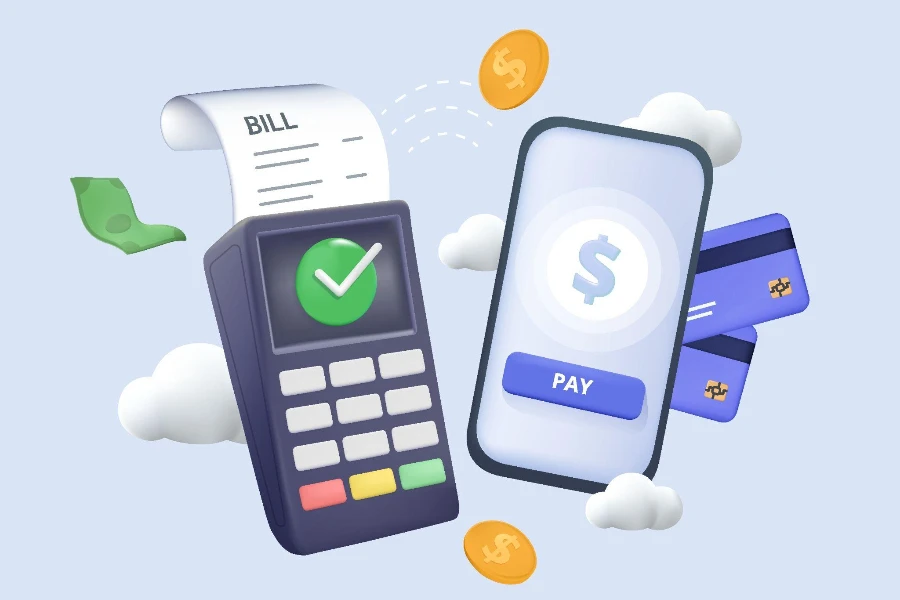In an era where digital transactions are the backbone of commerce, understanding payment processing is crucial for businesses aiming to thrive online. This article delves into the intricacies of payment processing, shedding light on its mechanisms, challenges, and the latest technological advancements shaping its future. By breaking down complex concepts into digestible explanations, we aim to empower businesses with the knowledge to make informed decisions that enhance their operations and customer satisfaction.
Table of Contents:
– What is payment processing?
– The key components of a payment processing system
– Common challenges in payment processing
– Technological advancements in payment processing
– How to choose the right payment processing solution
What is payment processing?

Payment processing is the cornerstone of any e-commerce operation, facilitating the transfer of funds from a customer’s account to a merchant’s account. This process involves several steps, starting from the moment a customer initiates a transaction to the final settlement in the merchant’s bank account. It’s a complex dance involving various players, including banks, payment processors, and payment gateways, each playing a pivotal role in ensuring a smooth, secure transaction.
Understanding the flow of payment processing can demystify how businesses receive funds and how customers are charged for their purchases. At its core, payment processing is about bridging the gap between the digital shopping cart and the physical bank, ensuring that money moves securely and efficiently from point A to point B.
The importance of payment processing in today’s digital marketplace cannot be overstated. It not only enables businesses to operate online but also plays a critical role in customer satisfaction. A seamless, secure payment process can enhance the customer experience, leading to increased loyalty and repeat business.
The key components of a payment processing system

A payment processing system is made up of several key components, each serving a specific function in the transaction process. First, there’s the payment gateway, which acts as the intermediary between the merchant’s website and the payment processor. It’s responsible for encrypting and securely transmitting transaction data.
Next, the payment processor comes into play, facilitating communication between the merchant, the customer’s bank (issuing bank), and the merchant’s bank (acquiring bank). It’s the engine behind the scenes, handling the technical aspects of processing the transaction.
Lastly, the merchant account is a specialized bank account that allows businesses to receive payments from credit and debit card transactions. It’s where the funds are deposited after a successful transaction, before being transferred to the business’s primary bank account.
These components work together in harmony to ensure that payment processing is smooth, secure, and efficient. Understanding each component’s role can help businesses choose the right payment processing solution that meets their specific needs.
Common challenges in payment processing

Despite its critical role in e-commerce, payment processing is not without its challenges. Security concerns top the list, with businesses and customers alike demanding robust measures to protect sensitive financial information. Fraudulent transactions and data breaches are real threats that can have devastating consequences.
Another challenge is the complexity of navigating the payment processing landscape. With a myriad of options available, each with its own set of fees, features, and contracts, making an informed decision can be overwhelming for businesses.
Lastly, the issue of compatibility arises, as businesses must ensure that their chosen payment processing solution integrates seamlessly with their existing systems. This includes not only their e-commerce platform but also accounting software and customer relationship management (CRM) systems.
Addressing these challenges requires a proactive approach, focusing on security, research, and integration capabilities. By doing so, businesses can create a payment processing system that not only meets their current needs but also scales with their growth.
Technological advancements in payment processing

The payment processing industry is constantly evolving, with technological advancements aimed at enhancing security, efficiency, and user experience. Blockchain technology, for example, offers a decentralized approach to payment processing, reducing the risk of fraud and lowering transaction costs.
Artificial intelligence (AI) and machine learning are also making waves, providing sophisticated tools for detecting fraudulent transactions and personalizing the customer payment experience. These technologies can analyze vast amounts of data to identify patterns and predict potential threats, adding an extra layer of security to the payment process.
Contactless payment methods, including mobile wallets and NFC technology, are becoming increasingly popular, offering customers a convenient and secure way to pay. These advancements not only improve the customer experience but also streamline the payment process for businesses.
How to choose the right payment processing solution

Choosing the right payment processing solution is a critical decision for any business operating online. It requires a careful assessment of the business’s specific needs, including transaction volume, target market, and preferred payment methods. Security features, fees, and compatibility with existing systems should also be top considerations.
It’s important for businesses to stay informed about the latest trends and technologies in payment processing. This knowledge can help them select a solution that not only meets their current needs but also positions them for future growth.
Ultimately, the right payment processing solution is one that offers reliability, security, and a seamless user experience. By prioritizing these factors, businesses can enhance their operations, build customer trust, and drive growth in the competitive digital marketplace.
Conclusion:
Payment processing is a vital component of e-commerce, enabling businesses to securely and efficiently handle transactions in the digital age. By understanding the key components, challenges, and technological advancements associated with payment processing, businesses can make informed decisions that bolster their operations and customer satisfaction. Choosing the right payment processing solution is crucial, requiring a balance of security, efficiency, and compatibility with existing systems. With the right approach, businesses can navigate the complexities of payment processing, ensuring their success in today’s digital world.




